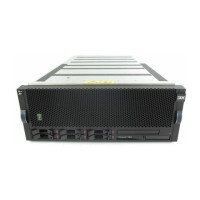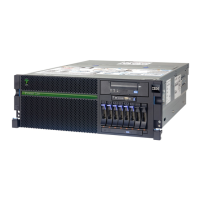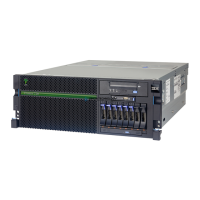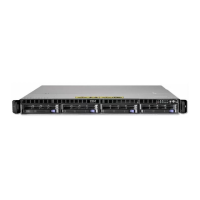Chapter 2. Architecture and technical overview 69
required in CEC enclosure 1, but it is not required in CEC enclosures 2, 3, or 4. On a
multi-enclosure system, the integrated multifunction card features can differ.
On the port type and cable size, the copper twinaxial ports support up to 5 m cabling
distances. The RJ-45 ports support up to 100 m cabling distance using a CAT5e cable. The
optical ports only support the 850 nm optic cable (multi-mode cable) and support up to 300 m
cabling distances.
The Power 770 and Power 780 each support one serial port in the rear of the system. This
connector is a standard 9-pin male D-shell, and it supports the RS232 interface. Because the
Power 770 and Power 780 are managed by an HMC, this serial port is always controlled by
the operating system, and therefore is available in any system configuration. It is driven by the
integrated PLX Serial chip, and it supports any serial device that has an operating system
device driver. The FSP virtual console will be on the HMC.
2.8 PCI adapters
This section covers the types and functions of the PCI cards supported by IBM Power 770
and Power 780 systems.
2.8.1 PCI Express (PCIe)
PCIe uses a serial interface and allows for point-to-point interconnections between devices
(using a directly wired interface between these connection points). A single PCIe serial link is
a dual-simplex connection that uses two pairs of wires, one pair for transmit and one pair for
receive, and can transmit only one bit per cycle. These two pairs of wires are called a
lane. A
PCIe link can consist of multiple lanes. In such configurations, the connection is labelled as
x1, x2, x8, x12, x16, or x32, where the number is effectively the number of lanes.
Two generations of PCIe interface are supported in Power 770 and Power 780 models:
Gen1: Capable of transmitting at the extremely high speed of 2.5 Gbps, which gives a
capacity of a peak bandwidth of 2 GBps simplex on an 8-lane interface
Gen2: Double the speed of the Gen1 interface, which gives a capacity of a peak
bandwidth of 4 GBps on an 8-lane interface
PCIe Gen1 slots support Gen1 adapter cards and also most of the Gen2 adapters. In this
case, when a Gen2 adapter is used in a Gen1 slot, the adapter will operate at PCIe Gen1
speed. PCIe Gen2 slots support both Gen1 and Gen2 adapters. In this case, when a Gen1
card is installed into a Gen2 slot, it operates at PCIe Gen1 speed with a slight performance
enhancement. When a Gen2 adapter is installed into a Gen2 slot, it operates at the full PCIe
Gen2 speed.
The IBM Power 770 and Power 780 CEC enclosure is equipped with six PCIe 8x Gen2 slots.
2.8.2 PCI-X adapters
IBM offers PCIe adapter options for the Power 770 and Power 780 CEC enclosure. If a
PCI-extended (PCI-X) adapter is required, a PCI-X DDR 12X I/O Drawer (FC 5796) can be
attached to the system by using a GX++ adapter loop. PCIe adapters use a different type
of slot than PCI and PCI-X adapters. If you attempt to force an adapter into the wrong type
of slot, you might damage the adapter or the slot. All adapters support Extended Error
Handling (EEH) on PCIe and PCI-X slots. For more information about RAS on I/O devices,
see Chapter 4, “Continuous availability and manageability” on page 159.

